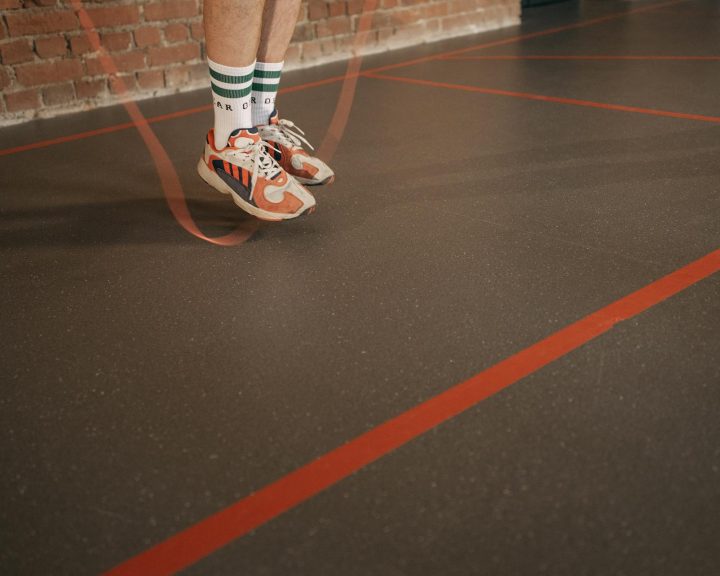The first post in this series dealt with principles that govern program design , the second with background information behind training for strength, power, and hypertrophy. This post will tie everything together.
Now that we’ve done some of the foundational work, it’s time to jump into the nuts and bolts of putting a program together. When you are getting ready to put your strength training program together, there are a few things to keep in mind:
• Determine what is most important: What is the most important thing to you? Is it bigger arms? A bigger squat? Figure that out and plan it first, plan everything else around the most important thing.
• Observe specificity: Once you know what is most important, put your workout together, deliberately, so that you can achieve your goals. Success isn’t accidental.
• Observe exercise order: The fastest and most complicated exercises should be done first, when you are freshest.
• Build in progression: Set your program up so that as you move through it things gradually become more complicated and more demanding. Build your base first!
• Build in overload: Yesterday should be the only easy day, your program has to become more difficult over time or you will not make gains.
• Remember you are an individual: You respond differently to training than everyone else, discover what works for you.
• Get enough rest and recovery: There are exceptions, but in general you want to get 48 hours of rest before training a muscle group again.
With the above in mind, there are several ways to organize your strength and conditioning program:
• By body part: This is pretty self-explanatory, normally this is organized to provide enough rest between sessions. The table below shows an example of doing this using chest, shoulders, and triceps in one workout.
• Around movements: The most common approach for this is a three-day split where one day involves pushing movements, one involves pulling movements, and one involves lower body training (usually squatting or deadlifting as the foundation exercise). The table below shows this type of workout organized around a pushing workout.
• Around exercises: With this approach, each workout is organized around the idea of improving performance on specific exercises (for example, bench press, deadlift, squat). Usually the main exercise is first, followed by the supplemental exercises that are designed to improve the main exercise. The table below shows an example of this type of workout with a bench press focus.
| Body Part | Movements | Exercises | |
| Workout | Chest:
Bench Press, 3×6-10×80% Incline Dumbbell Press, 3×12-15 Dumbbell Flies, 3×12-15
Shoulders: Seated Military Press, 3×6-10 3-in-1 Shoulders, 3×10 each
Triceps: Dips, 3×12-15 Triceps Pushdowns, 3×12-15 |
Pushing:
Bench Press, 3×6-10×80% Dumbbell Bench Press, 3×6-10 Superset: Dips & Push-Ups, 3xMax each Seated Military Press, 3×6-10 Close Grip Bench Press, 3×12-15 Triceps Pushdowns, 3×12-15 |
Bench Press Focus:
Bench Press, 5×4-8×85% Eccentric Bench Press, 3x4x70% Dumbbell Front Raises, 3×12-15 Floor Press, 3×12-15 Seated Rows, Bench Press Grip, 3×6-10
|
When looking at the above table, notice that all three workouts involve the bench press, yet they are all very different. The body part workout has a higher volume (i.e. more exercises and more repetitions), the bench press focused workout at the end has a lower volume but is more clearly geared towards increasing your bench press. The one in the middle does a little bit of everything. Truthfully, the body part and movement workouts could be identical. The workout focused on the bench press is designed to address deficiencies on the lift.
The body part or movement approach to organizing your workouts is going to be more effective for pure hypertrophy training. The exercise and movement approaches are going to be more effective for pure strength and for power training.
So how do we do this, step by step? We’re going to build three sample programs around three very different goals. Each goal is going to assume that we’re going to train four times a week. The first goal will look at gaining muscle mass, the second at improving our deadlift, the third at becoming more explosive.
Goal #1: Gaining muscle mass
When trying to gain muscle mass, either the body part or movement approach is going to be most effective. Since we’re going to be training over four days a week, we’re going to take the bodypart approach. The goal is to gain muscle mass all over, so we don’t need to prioritize any particular areas. As a result, the program is going to be organized as follows:
Day One: Legs
Day Two: Chest, triceps
Day Three: Off
Day Four: Back, biceps
Day Five: Shoulder
The next table shows the individual workouts.
| Day One | Day Two | Day Three | Day Four | Day Five | |
| Workout: | Back Squats, 3×8-12×80%
Leg Press, 3×8-12 Leg Extensions, 3×12-15 Romanian Deadlifts, 3×8-12 Leg Curls, 3×12-15 Calves, 5×12-15 |
Bench Press, 3×6-10×80%
Incline Dumbbell Press, 3×8-12 Dumbbell Flies, 3×12-15 Dips, 3×12-15 Triceps Pushdowns, 3×12-15 |
Off | Pull-Ups, 3×8-12
Seated Rows, 3×8-12 One-Arm Dumbbell Rows, 3×8-12 Barbell Curls, 3×12-15 Concentration Curls, 3×12-15 |
Seated Dumbbell Press, 3×8-12
Superset: Front and Standing Side Raises, 3×12-15 each Superset: Seated Side Raises and Bent Over Rear Delts, 3×12-15 each Shrugs, 5×6-10 |
Each workout has a moderate volume (6-15 repetitions per set). The focus is on multi-joint exercises with some notable exceptions (leg extensions, leg curls, calves, biceps, triceps, and shoulders). An important consideration is that the overload principle must be obeyed. This means that over the 4-12 weeks that you would stay on this program, you would need to increase the weights and the number of repetitions staying within that 6-15 rep range.
Goal #2: Increase the deadlift
There are a number of areas that are potential limits to deadlift strength. These include grip strength, ability to lift the weight off the floor (i.e. leg strength), or the ability to extend and stand upright (i.e. lower back, hamstring, and glute strength). Knowing that, a workout program will need to address those areas. Since our priority is the deadlift, it is done first. We’re going to blend the approaches to training here:
Day One: Deadlift
Day Two: Pushing
Day Three: Off
Day Four: Squat
Day Five: Pulling
The next table shows the individual workouts. Keep in mind that overload has to be applied over time to keep these workouts effective.
| Day One | Day Two | Day Three | Day Four | Day Five | |
| Workout: | Deadlift, 5×3-6×80-85%
Deadlift, Bar Above Knees, 3×3-6×80% Romanian Deadlift, 3×8-12 Reverse Hyperextensions, 3×12-15 Calves, 3×12-15 |
Bench Press, 3×6-10×80%
Dumbbell Bench Press, 3×6-10 Superset: Dips & Push-Ups, 3xMax each Seated Military Press, 3×6-10 Close Grip Bench Press, 3×12-15 Triceps Pushdowns, 3×12-15 |
Off | Back Squat, 5×3-6×80-90%
Eccentric Squat, 3×3-6×60-70% Glute/Ham Raises, 3×12-15 Calves, 3×12-15 |
Pull-Ups, 3×8-12
Seated Rows, 3×8-12One-Arm Dumbbell Rows, 3×8-12 Barbell Curls, 3×12-15 Concentration Curls, 3×12-15 |
Goal #3: Increase explosiveness
When trying to increase explosiveness, we need to train that quality while maintaining or increasing strength. This will involve a combination of variations of the Olympic lifts, plyometrics, and strength-focused training. Done over four days, our training will look like this:
Day One: Power
Day Two: Strength
Day Three: Off
Day Four: Power
Day Five: Strength
The next table shows the individual workouts. Remember to apply the principles of overload and specificity over the weeks that you may use this workout.
To be effective, strength training programs must observe certain fundamental principles and they must be organized deliberately. Failure to do these things will result in programs that (at best) are ineffective wastes of time and energy and (at worst) are dangerous.
| Day One | Day Two | Day Three | Day Four | Day Five | |
| Workout: | Power Clean, 3x4x70%
Clean Pulls, 3x6x75% Push Press, 3x4x60% Vertical Jumps, 3×10 Medicine Ball Throw, 3×10 |
Back Squats, 3×4-8×80-90%
Romanian Deadlifts, 3×4-8 Incline Press, 3×4-8×80-90% Bent Over Barbell Rows, 3×4-8 Seated Dumbbell Shoulder Press, 3×6-10 |
Off | Power Snatch, 3x4x70%
Snatch Pulls, 3x6x75% Push Press, 3x4x60% Standing Long Jump, 3×10 Medicine Ball Throw, 3×10 |
Deadlifts, 3×3-6×80-90%
Front Squats, 3×3-6×70-80% Bench Press, 3×4-8×80-90% Pull-Ups, 3×4-8 Military Press, 3×6-10 |
Revised November 9, 2024




1 thought on “Thoughts on Program Design, Part 3”
Great articles John. It should be read by all trainers and coaches no matter what level they are at. All too often trainers create programs on the go as if throwing exercises against a wall and seeing what sticks to it.
Comments are closed.